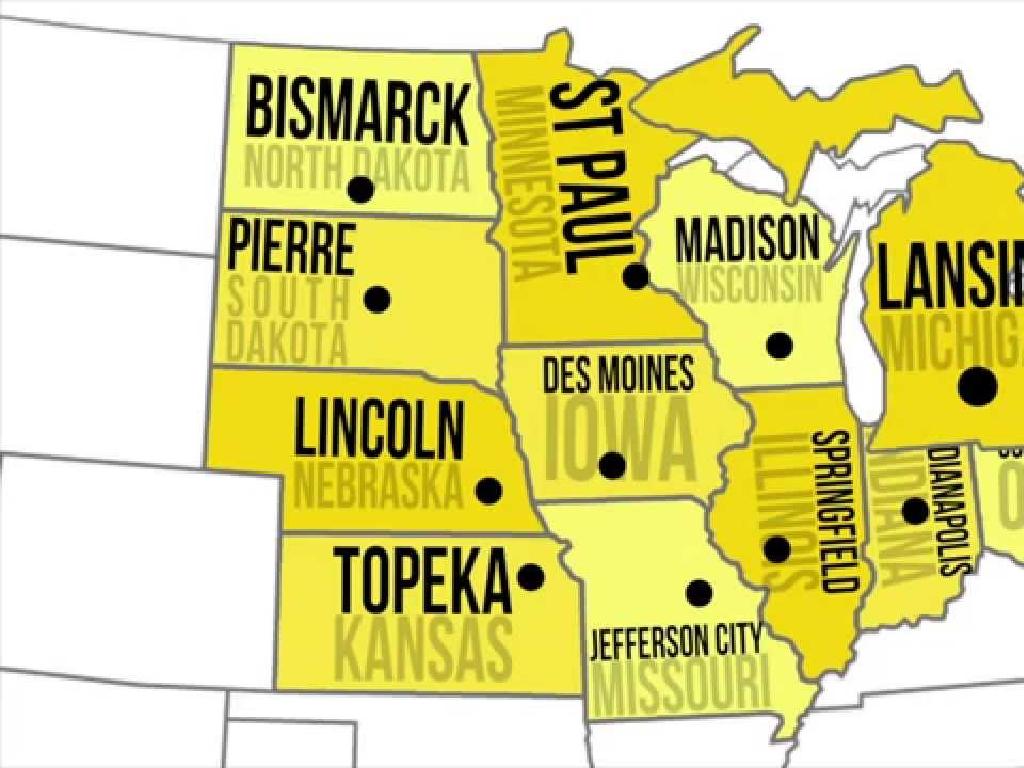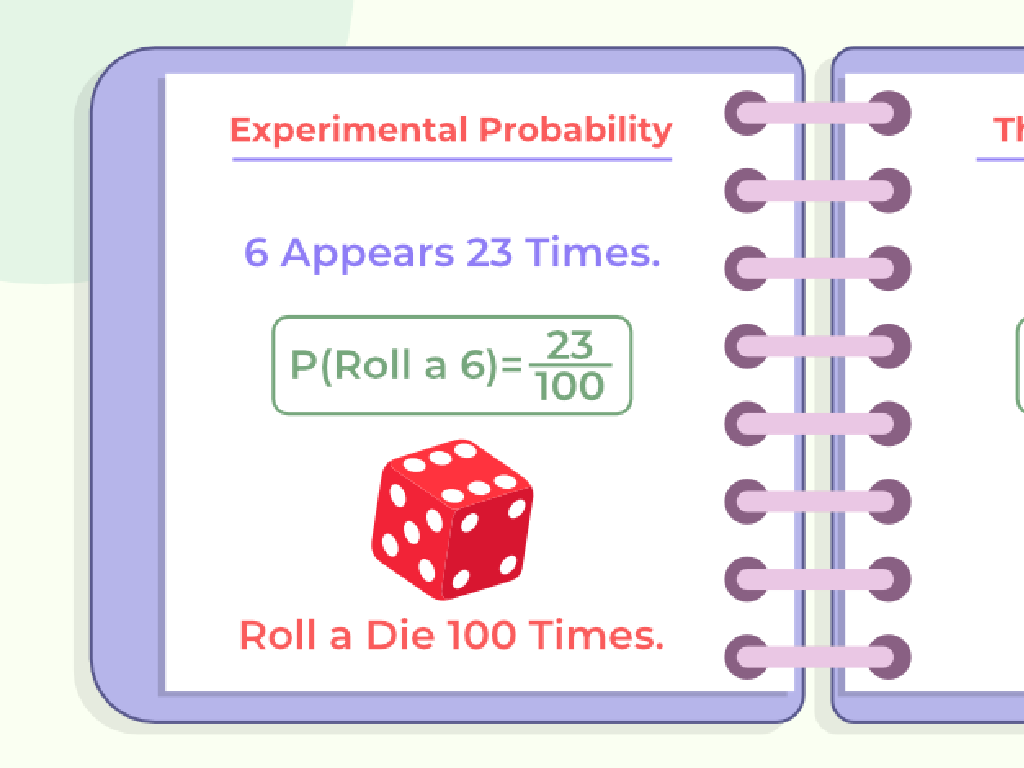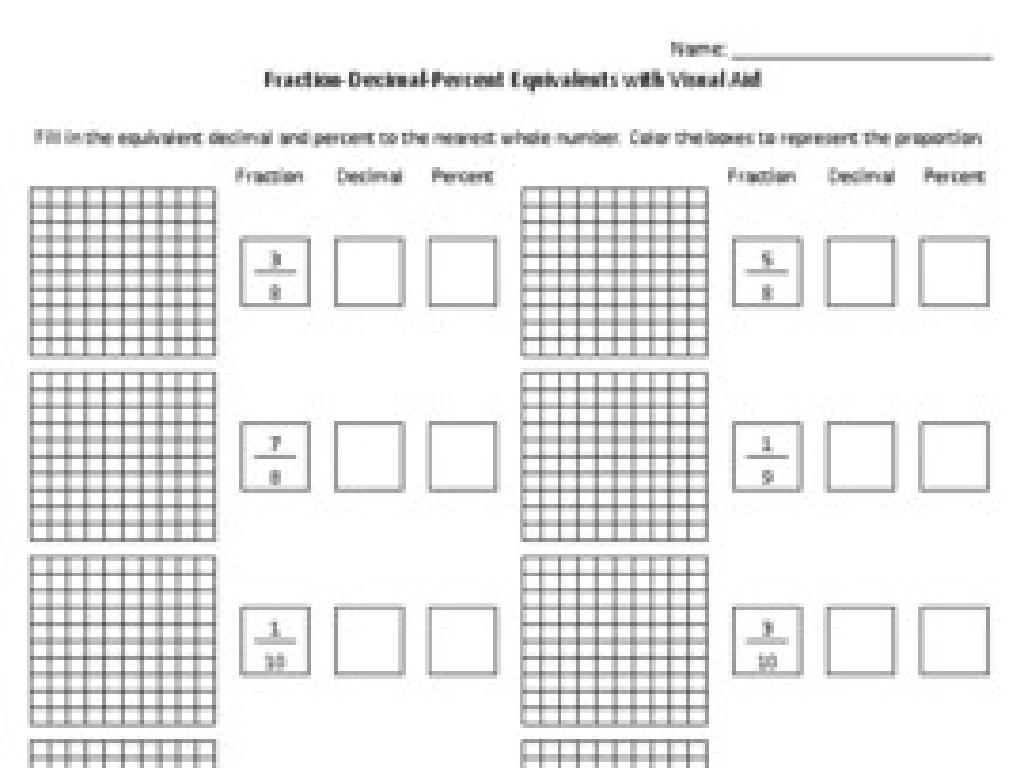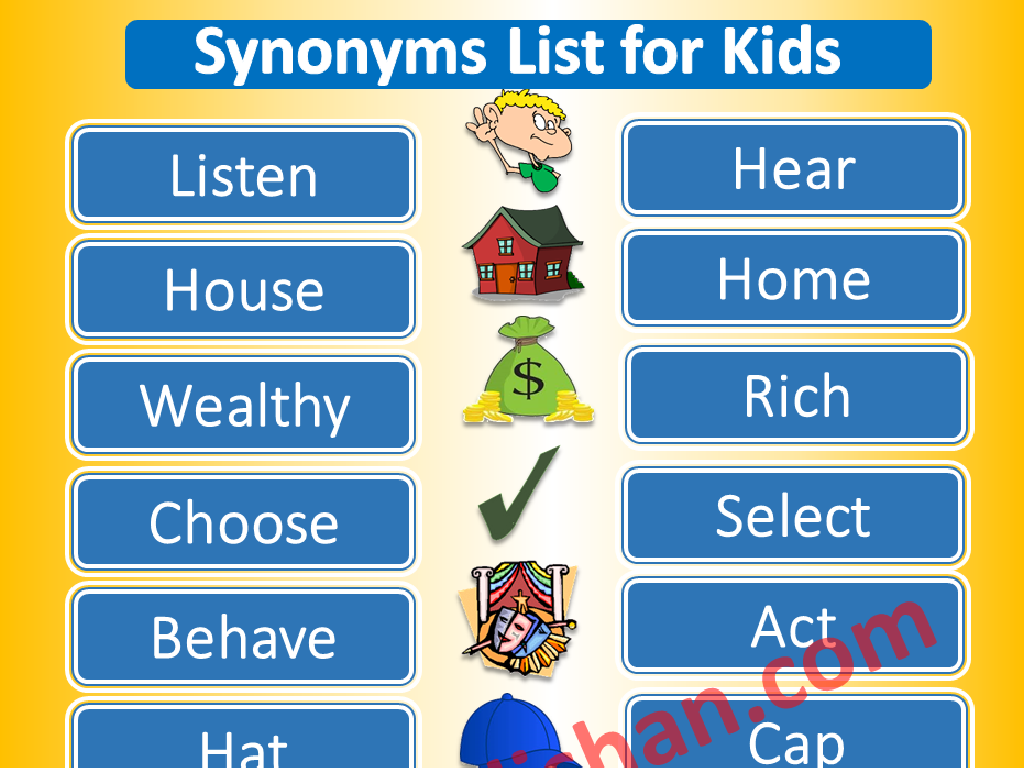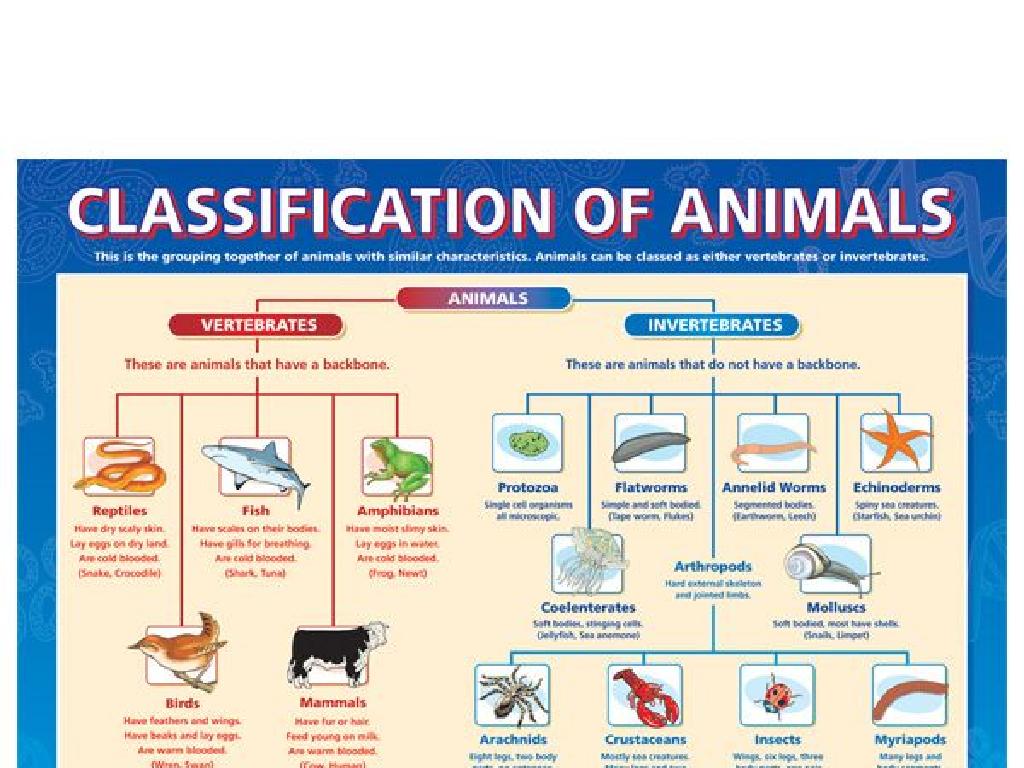Multiply Fractions
Subject: Math
Grade: Seventh grade
Topic: Operations With Fractions
Please LOG IN to download the presentation. Access is available to registered users only.
View More Content
Introduction to Multiplying Fractions
– Recap: What are fractions?
– Fractions represent parts of a whole.
– Today’s goal: Multiplying fractions
– Learn to multiply numerators and denominators.
– Real-life applications
– Used in cooking, crafting, and more.
– Practice problems
|
Begin with a brief review of fractions, ensuring students recall that fractions represent parts of a whole and consist of a numerator and denominator. Today’s objective is to understand how to multiply fractions by multiplying the numerators together and the denominators together. Emphasize the practicality of this skill by discussing real-life scenarios where multiplying fractions is necessary, such as doubling a recipe or dividing a piece of wood into smaller, equally-sized pieces. Conclude with practice problems to solidify their understanding, providing a variety of examples to work through as a class.
Visualizing Fractions
– Understanding a fraction
– A fraction represents a part of a whole.
– Numerator vs. Denominator
– Numerator: top number, Denominator: bottom number.
– Pie chart fraction examples
– Pie charts show fractions as parts of a circle.
– Fraction bars as visual aids
– Fraction bars illustrate parts of a whole as segments.
|
This slide introduces the concept of fractions to students by breaking down the basics and providing visual aids. Start by explaining that a fraction represents a part of a whole, which is a fundamental concept in understanding how to multiply fractions. Clarify the roles of the numerator and denominator, ensuring students can identify and differentiate between them. Use pie charts to show how a circle can be divided into equal parts, with each part representing a fraction of the whole. Similarly, demonstrate with fraction bars how a whole can be divided into equal segments. These visual examples will help students grasp the concept of fractions more concretely, setting a strong foundation for learning how to multiply them.
Multiplying Fractions: Understanding the Basics
– What multiplication signifies
Multiplication can be viewed as repeated addition or combining groups.
– Whole numbers vs. fractions
Whole numbers: straightforward counting. Fractions: combining parts of a whole.
– Examples with small fractions
1/2 x 1/4 = 1/8. Multiply numerators and denominators.
– Visualizing fraction multiplication
Use area models or number lines to illustrate.
|
This slide introduces the concept of multiplication with a focus on fractions. Begin by explaining that multiplication is a way to combine equal groups, which can be seen as repeated addition. Highlight the difference between multiplying whole numbers, which involves counting complete sets, and multiplying fractions, which involves combining parts of a whole. Provide clear examples using small fractions to show that you multiply the numerators together and the denominators together to find the product. Encourage students to visualize the process using area models or number lines, which can help them grasp the concept of combining fractional parts. Ensure to provide practice problems for students to apply these concepts.
Steps to Multiply Fractions
– Multiply the numerators
– Product of top numbers gives new numerator
– Multiply the denominators
– Product of bottom numbers gives new denominator
– Simplify the fraction, if needed
– Reduce the fraction to its simplest form
|
When teaching students to multiply fractions, start by explaining that the numerator is the top number and the denominator is the bottom number of a fraction. Emphasize that multiplication is performed across the numerators and denominators separately. After obtaining the new numerator and denominator, guide students on how to simplify the fraction. This involves finding the greatest common divisor (GCD) of the numerator and denominator and dividing both by that number to reduce the fraction to its simplest form. Provide examples and practice problems to help students become comfortable with each step. For instance, multiplying 3/4 by 2/5 results in 6/20, which simplifies to 3/10 after dividing both numerator and denominator by 2.
Multiplying Fractions with Whole Numbers
– Convert whole numbers to fractions
– Any whole number can be a fraction with 1 as the denominator
– Multiply fractions by whole numbers
– Multiply the numerators across for the product
– Simplify the resulting fraction
– Reduce the fraction to its simplest form
|
This slide aims to teach students the process of multiplying fractions with whole numbers. Start by converting the whole numbers into fractions by placing them over 1. This helps in aligning the operation with the process of multiplying two fractions. Emphasize the multiplication of the numerators to find the new numerator and keeping the denominator as 1. After the multiplication, guide students on how to simplify the fraction, if possible, by finding the greatest common divisor (GCD) for the numerator and denominator. Provide examples such as multiplying 3 (converted to 3/1) by 2/5, resulting in 6/5, which simplifies to 1 1/5. Encourage practice with different whole numbers and fractions to ensure understanding.
Multiplying Fractions: Class Practice
– Work through example problems
– Guided practice as a group
We’ll solve problems together, step by step.
– Discuss solution strategies
Why did we use this method? What are other ways?
– Review and clarify methods
Let’s ensure everyone understands the process.
|
This slide is dedicated to interactive class practice on multiplying fractions. Start with a couple of example problems, solving them as a class and ensuring active participation. Move on to guided practice, where students attempt problems with teacher support. Discuss various solution strategies to reinforce understanding and address common mistakes. Conclude by reviewing the methods used, clarifying any doubts, and answering questions. Possible activities: Pair students to solve problems, use visual aids to represent fractions, or create a game where students race to solve fraction multiplication problems correctly.
Class Activity: Exploring Fraction Multiplication
– Group activity: solve problems together
– Each group presents their solutions
– Discuss different problem-solving methods
– Compare how different groups approached the same problem
– Reflect on the activity and learnings
– Discuss what was learned and how it can be applied
|
This slide outlines a collaborative class activity focused on multiplying fractions. Divide the class into small groups and provide each with a set of fraction multiplication problems. Encourage students to work together to find the solutions, fostering teamwork and communication. After solving the problems, each group will present their solutions to the class, allowing students to see various methods of solving the same problem. Conclude with a class discussion on the different approaches taken, highlighting the benefits of diverse problem-solving strategies. This activity aims to deepen students’ understanding of fraction multiplication and to appreciate the value of collaboration. Possible activities: 1) Create visual aids to explain solutions, 2) Use real-life scenarios involving fractions, 3) Peer review of group solutions, 4) Timed challenges for fun competition, 5) Incorporate technology, like fraction calculator tools or educational apps.
Homework and Further Practice: Multiplying Fractions
– Complete assigned homework problems
– Utilize online resources for extra practice
– Websites offer interactive exercises and videos
– Preview next topic: Dividing Fractions
– Get a head start on understanding how to divide fractions
– Practice regularly to master multiplication
– Consistent practice helps solidify concepts
|
This slide is aimed at reinforcing the students’ understanding of multiplying fractions through homework and additional practice. Assign a set of problems that cover a range of difficulties to cater to the diverse skill levels within the class. Encourage students to explore online resources such as educational websites and videos for further practice, which can provide interactive and engaging ways to learn. Introduce the next class topic, dividing fractions, to pique their interest and prepare them for the upcoming lesson. Emphasize the importance of regular practice in mastering the multiplication of fractions, as consistent repetition will help them retain the concept and apply it confidently in different scenarios.

